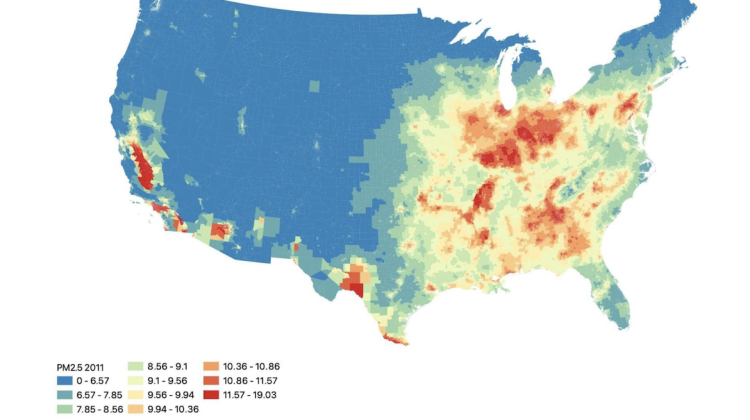Utilizing Urban Science to Better Understand Air Pollution Exposure

Annual-averaged PM2.5 (μg/m3) in 2011 across census tracts, classified into deciles.
Across numerous scientific studies, exposure to fine particulate matter (PM 2.5) has been linked with a variety of health complications such as premature death as well as cardiovascular and respiratory disease. Given the well documented health impacts, the US government has saught to regulate and reduce overall outdoor PM 2.5 levels. However, this reduction in PM2.5 is unevenly distributed across racial groups in the US. Further complicating our understanding of the state of PM2.5 exposure in the US, most studies measure and analyze residential locations only, omitting commuting exposure as well as workplace exposure.
A new paper for Environmental Science and Technology, explores how connecting both workplace and residential exposure to ambient air pollution impacts individuals across race, income, education, age, and gender differences. The paper, “Quantifying Disparities in Air Pollution Exposures across the United States Using Home and Work Addresses,” leverages a sample of 128-144 million individuals across seven years to add more clarity about air pollution exposure by race, ethnicity, education status, income, age, and job-type.
"Although people spend a substantial amount of time at work, traditional environmental justice metrics are based on where people live. This focus has highlighted how forces of structural racism such as residential segregation, and the siting of industrial facilities have driven disparities in exposure to pollution by race/ethnicity and income. Less attention has been paid to how disparities in access to transportation and workplace discrimination have shaped these disparities," says the paper's lead author and DUSP alumna, Priyanka deSouza (PhD '21). "Our paper attempts to broaden our understanding of environmental justice and the forces of structural racism that must be tackled to achieve equitable pollution exposure, nation-wide."
deSouza is an assistant professor at the Department of Urban and Regional Planning at the University of Colorado Denver. Her research focuses on how to make cities around the world more resilient to the impacts of air pollution and climate change. Additional authors include: DUSP’s Fabio Duarte and Carlo Ratti, and Susan Anenberg, Carrie Makarewicz, Manish Shirgaokar, John Durant, Patrick Kinney, and Deb Niemeier.


